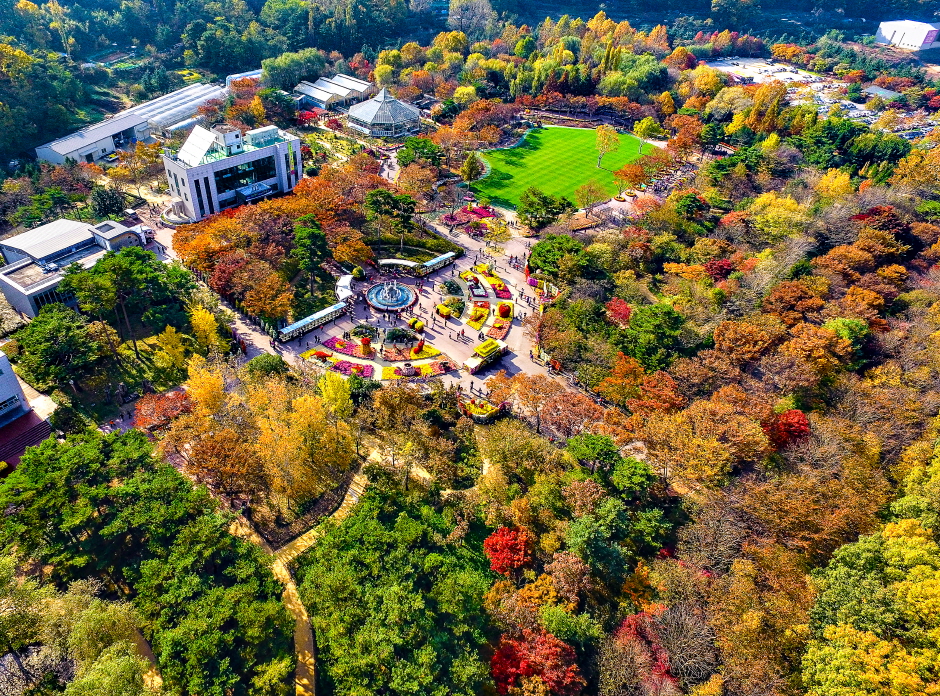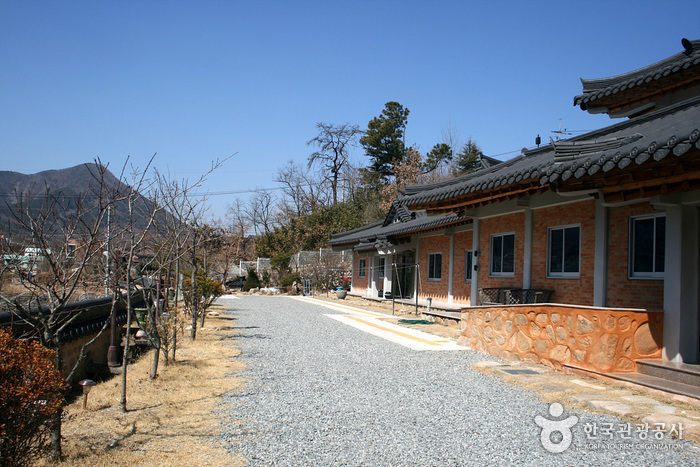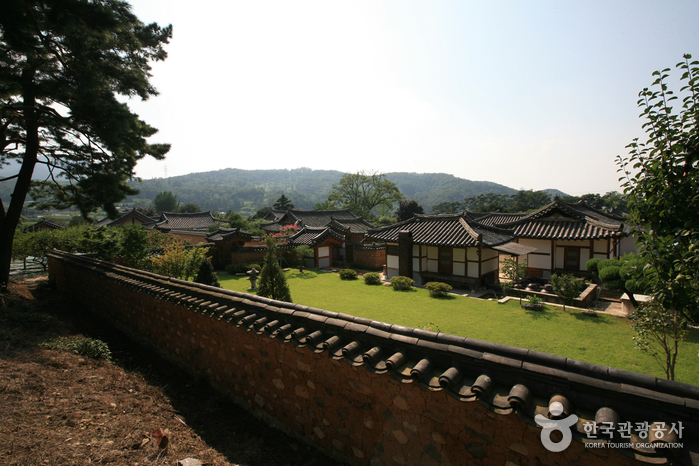Hotel Crape [Korea Quality]호텔크라페 성서점[한국관광 품질인증]
10.5Km 0 2023-05-23
6-4, Seongseogongdan-ro 11-gil, Dalseo-gu, Daegu
+82-53-588-3300
Hotel Crape in Seongseo, Daegu, Gyeongsangbuk-do, is a boutique hotel near the Seongseo Industrial Complex. It offers a variety of room types and caters for both business travelers and family customers. The nearby Moda clothing outlet makes this a good base for shopping; Keimyung University Seongseo Campus (often used as a filming location) is 10 minutes away by car, as is the Keimyung Arts Center where visitors can enjoy concert performances. Nearby is Daemyeong Reservoir, whose reed fields are popular in the autumn.
Daegu Stadium (대구스타디움)
10.6Km 20230 2022-06-30
180, Universiad-ro, Suseong-gu, Daegu
+82-53-803-8300
Daegu Stadium is a sports stadium located in Daeheung-dong, Suseong-gu in Daegu. Construction of the stadium began on July 28, 1997 and was completed on May 20, 2001. Its roof is designed to resemble a globe, incorporating the beautiful curves found in the roofs of traditional Korean houses.
The stadium seats approximately 66,000 people and is suitable for hosting large-scale international sports games and 74% of the seats are protected by a Teflon-coated overhang. The 47,407 square meter stadium has three stories below ground and three above ground floors and is built on a 512,479 square meters of land just 9 kilometers southeast of the city’s downtown area.
Stadium facilities include a gymnasium, baseball field, indoor ice rink, horseback riding track, tennis court, fitness center, shooting range, archery range, skateboard park, and an indoor jogging course. There are smaller buildings for taekwondo, judo, and rock climbing.
Daegu Stadium has hosted a number of 2002 FIFA World Cup matches; Senegal vs. Denmark (June 6), Slovenia vs. South Africa (June 8), Korea vs. U.S.A. (June 10) and Korea vs. Republic of Turkiye (June 29).
Optic Libre Haebang Eyewear - Daegu Daegok Station Branch [Tax Refund Shop] (옵틱리브레해방안경 대구대곡역점)
10.8Km 0 2024-06-28
2708, Biseul-ro, Dalseo-gu, Daegu
-
Daegu Arboretum (대구수목원)
11.1Km 93880 2023-11-17
342 Hwaam-ro, Dalseo-gu, Daegu
+82-53-803-7270
Daegu Arboretum is located at the site of an old sanitary landfill. The restoration of the area passed through many stages from 1996 until the opening in May 2002. It is home to more than thousands of species of plants including giant cacti, flowers, medicinal herbs, and trees in 21 gardens. The arboretum serves as an ecological education center and rest area for Daegu citizens. Ecology experience programs for students and young children are held regularly during summer vacation. Nearby attractions include Apsan and Duryu Parks, as well as Palgongsan and Biseulsan Mountains.
Gooam Farmstay Village (구암팜스테이마을)
11.1Km 53032 2024-03-15
8-1 Guam-gil, Dong-gu, Daegu
+82-53-984-5273
Known as "Gooam" due to its rock formations resembling turtle's shell, Gooam Farmstay Village offers various activities such as harvesting agricultural produce, traditional food making, traditional games, and craft experiences. Depending on the season, there are experiences like picking strawberries, digging potatoes, picking cherry tomatoes, gathering chestnuts, and harvesting persimmons. Visitors can also participate in making bean curd, rice cakes, kimchi, catching loaches, making kite, and experiencing hanji crafts.
Daemyeong Reservoir (대명유수지)
11.2Km 1 2024-02-15
816 Daecheon-dong, Dalseo-gu, Daegu
Daemyeong Reservoir, located adjacent to Dalseong Marsh, is at the convergence point of the Nakdonggang River, Geumhogang River, Daemyeongcheon Stream, and Jincheon Stream. This area is a rich ecological reserve, home to a diverse range of wildlife including the narrow-mouthed toad, leopard cat, weasel, common kestrel, and water deer, along with various wild plants. Visitors to the area can explore narrow-mouthed toad habitats, observation decks, ecological exploration trails, and photo zones. There's also a narrow-mouthed toad ecological learning center for educational experiences. The surrounding landscape, with its stretches of silver grass and reeds along the walking decks, offers a picturesque setting, particularly attractive for autumn photography.
Daegu Spa Valley (대구 스파밸리)
11.3Km 57874 2024-02-29
891 Gachang-ro, Gachang-myeon, Dalseong-gun, Daegu
+82-1688-8511
Daegu Spa Valley is a year-round water park offering various water attractions and hot springs. It features a 250m lazy river pool, Speed Slides, Jungle Aqua, hot spring saunas, Aqua Play, and both indoor and outdoor water playgrounds. There are water park experience programs available for day trips or overnight stays.
Museum of Natural Dye Arts (자연염색박물관)
11.4Km 9198 2021-03-19
17, Pagye-ro 112-gil, Dong-gu, Daegu
+82-53-981-4330
The Museum of Natural Dye Arts was formed to collect and preserve the traditional way of dyeing, as well as inform the high quality of Korean natural dye to the world. The museum has various art products from around the world. Divided into two floors, Ahwon Gallery on the first floor showcases replicas of ancient dyeing tools and provides information on the natural dyeing process. The Relic Hall on the second floor displays pieces of ancient artwork including fabric, clothes, pillows, blankets and accessories, all made using different methods such as dyeing, embroidery, quilting, knotting and sewing.
Olive Young - Daegu Siji Branch [Tax Refund Shop] (올리브영 대구시지)
11.5Km 0 2024-04-18
3214, Dalgubeol-daero, Suseong-gu, Daegu
-
Inheung Village (인흥마을)
11.9Km 16618 2020-04-14
16, Inheung 3-gil, Dalseong-gun, Daegu
+82-53-668-3162
The descendants of Mun Ik-jeom, who are known to have
brought the Nampyeong Mun clan to prosperity, reportedly came to Daegu about 500 years ago. It was during the time of Mun Gyeong-ho (1812-1874), the 18th descendant of Mun Ik-jeom, that the clan became established in Inheung. Mun executed his plan to create a village for the clan by putting down roots in the old site of Inheungsa Temple, a large-scale temple in the Goryeo era.
Yonghojae, which is a place for offering ancestral memorial services, is the first building established at the village constructed before or after 1920. The first residential building was built around the late 1800s in the form of thatched cottage. During the course of a hundred years, the village developed into what it is today. Featuring about 70 or so tile-roofed homes, Inheung Village is only about 200 years old but it is a great example of traditional residential homes of the em>yangban upper class in the Yeongnam region. The harmony between the way the village is organized and the surrounding landscape is unique and rare.
![Hotel Crape [Korea Quality]호텔크라페 성서점[한국관광 품질인증]](http://tong.visitkorea.or.kr/cms/resource/73/2949273_image2_1.jpg)

![Optic Libre Haebang Eyewear - Daegu Daegok Station Branch [Tax Refund Shop] (옵틱리브레해방안경 대구대곡역점)](http://tong.visitkorea.or.kr/cms/resource/65/3312765_image2_1.jpg)


![Olive Young - Daegu Siji Branch [Tax Refund Shop] (올리브영 대구시지)](http://tong.visitkorea.or.kr/cms/resource/51/2884151_image2_1.jpg)

 English
English
 한국어
한국어 日本語
日本語 中文(简体)
中文(简体) Deutsch
Deutsch Français
Français Español
Español Русский
Русский